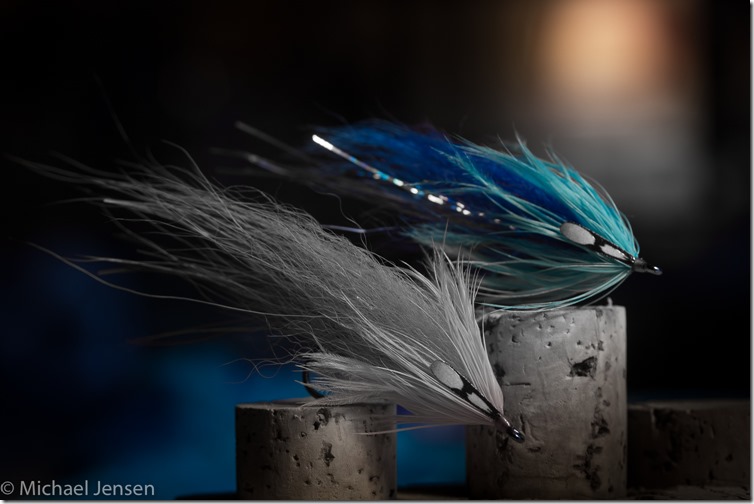Today, let’s talk colour. As fly fishermen we are kind of obsessed with colours. We are not any different from guys swinging spoons, spinners and jigs in that regard. But tying your own flies doesn’t make things less complicated. Everybody is searching for that colour combo that is just irresistible to anything with fins. We use as much time talking colours as we do talking weather – and bad excuses for not catching the big one today.
So let’s play a bit around with the topic. When you are trying to imitate a very specific baitfish, shrimp, crayfish or frog – well, the job at hand is kind of a no brainer. You just look at the critter you are trying to imitate – and copy/paste the overall colour pattern to your fly.
But sometime the imitating game isn’t the most effective approach. One example of this is when you fish your brown mottled sculpin imitation among thousands of the real deal. Why should a predator pick out one fly, that tries to camouflage itself in a crowd? An all-black or an all-white sculpin might have a better chance of being chosen. The body profile is still right, but the colour make it stand out.
Let’s forget the imitation game and the theoretical discussion about how fish see – just for a second and focus on sheer visibility.
Let there be light
Fish rely to varying degree on sonar and hearing when looking for prey – but mostly they use sight. To be able to see anything daylight, or white light, is important. Daylight consists of a mix of colours – you might remember the prism and the rainbow experiment from your school days.
Seeing a fly with a mixture of colours over water – gives you all the details. Every colour is vibrant and visible. When your fly goes under water, it is a different story. Water absorbs daylight. Already when your fly is half an inch below the surface 25 % of the light is lost – partly due to reflection from the surface. 3 feet down 55 % of the light is gone. At 30 feet only 22 % is left.
Now this is all considering you fish in crystal clear oceanic water. If you fish in stained, dirty or algae affected water light can be totally gone a few feet down. But for now, let’s stay in clear water.
Which colours are the first to disappear?
As you enter deeper water the colours disappear one by one. Red is the first casualty. In totally perfect conditions (flat surface, sun right over head, clear oceanic water) red colour will appear grey from 17 feet and down. On dark days, at dusk or in murky, stained and dirty water red can be totally gone a few feet down. The next colour that is gone is orange.
Here is lights-out priority list:
Red – orange – yellow – green – blue – purple.
Red orange and orange (and white, for that matter) is great for flies fishing near the surface on sunny days. The same can be said about black – since it makes a highly visible silhouette against the sky. Actually, anything goes when there’s enough light.
When you go a bit deeper or turn down the light in other ways, yellow and green will be the next to give up.
A bit darker and all you’ve got left is the blue, purple and black spectrum.
Going deep with high density lines – or fishing the dark hours? Well, blue, purple and black is in theory your best shot.
Some exceptions from the rules
A lot of different environmental issues can complicate things. Nothing really turns down light more efficient than wind. At flat surface reflect less light than a choppy surface. That is one of the reasons why trout loves a good wave. In fact, they just like the light reduction.
In algae infested waters green light is the only colour penetrating the water column. Chartreuse flies are very useful here.
In stained (read coffee or tea stained) water, the golden and red colours stand out. Red, yellow and orange works great, as long as there’s light. When darkness falls it is back to the blue/black and purple combo.
Then there’s the UV colours and other complicated stuff I won’t go into – since I would be afraid to sound a bit like a 10-year-old kid sharing his wisdom on women ;0)
A couple of videos on winter flies
With winter, dark days, murky water and all that stuff in sight – I have selected a couple of videos with low-light-flies for you. First one is brand new. It’s my own Sparkle Fox – the rest is from the archives.
Have a nice weekend :0)
Michael




